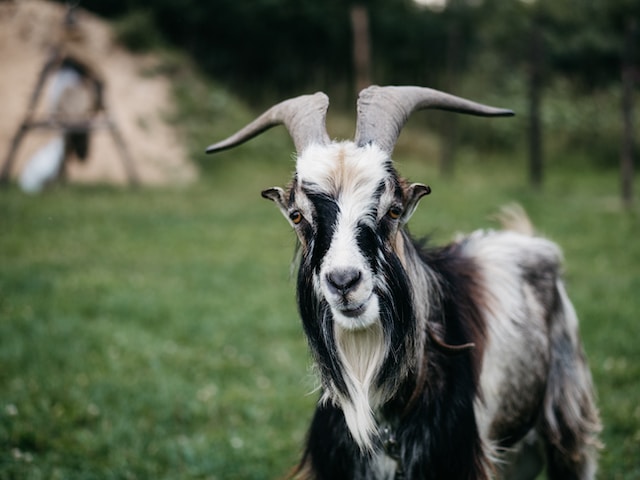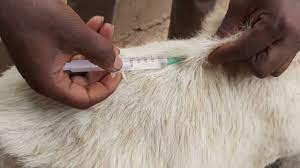Introduction to Peste des Petits Ruminants (PPR) in Goats
Peste des Petits Ruminants (PPR) is a highly infectious virus affecting goats, causing health issues and financial challenges for farmers. The disease can lead to reduced milk yield, general lethargy, and depression among goats. Vaccination is a critical strategy to counter PPR as it helps animals generate antibodies against the virus. The early detection of PPR depends on regular veterinary check-ups, prompt reporting of suspected cases, and accurate laboratory testing.
Several risk factors contribute to the spread of PPR, such as the absence of proper quarantine when introducing new animals, insufficient biosecurity measures, and specific seasonal conditions. Implementing robust biosecurity measures, strict quarantine protocols, and avoiding contact with infected animals can mitigate the risk of PPR spread in herds.
Financial Impact of PPR
PPR can inflict considerable financial damage on goat producers due to reduced milk production, weight loss, decreased appetite, and reproductive difficulties. Consequently, a significant economic impact is felt due to treatment costs and loss of goats to the disease.

Vaccination and Preventative Measures
Preventative measures, including regular immunization and stringent biosecurity measures, are crucial to mitigate PPR’s financial burden. Collaborating with veterinary professionals for guidance on disease prevention, control techniques, and market diversification is advisable.
Vaccination is the most effective strategy to prevent PPR. Goats should be vaccinated as per regional schedules and quarantined before integration with the rest of the herd. Adherence to personal hygiene, such as proper handwashing and pest control, is also important. Participation in disease monitoring and surveillance programs helps to remain informed about the local PPR situation.
In sum, vaccination is pivotal in safeguarding goats from PPR. Cooperation with veterinary professionals and the implementation of preventative measures can help curb PPR prevalence, protecting the livelihood of goat farmers. PPR prevention and control rest on implementing stringent biosecurity practices, including routine hand washing, disinfection of equipment, and separation of herds.
Surveillance and Early Detection
Surveillance plays a crucial role in PPR control, allowing early detection of the disease and facilitating timely intervention. In sentinel surveillance, selected goat herds serve as “sentinels” providing insights into the disease prevalence in an area. Farmers are key to monitoring and reporting potential PPR cases, with veterinarians and government organizations offering expertise in PPR diagnosis and confirmation.
Education about PPR is vital. Participation in workshops, training programs, and other educational initiatives can bolster diagnostic abilities and disease control efforts. Effective PPR monitoring can be achieved through collaboration between farmers, veterinary professionals, and government organizations.
Lawmakers, by collaborating with veterinarians and farmers, can gain firsthand knowledge about PPR-related issues, aiding in the formulation of effective laws and standards. Researchers are constantly exploring safer and cost-effective vaccines, antiviral treatments, and medications. The ‘One Health’ concept, considering the health of people, animals, and the environment as interconnected, is an increasingly popular approach for disease prevention and control.
PPR significantly influences goat farmers’ access to international trade and consumer markets. Stringent movement restrictions and quarantine measures might be put in place by governments and regulatory bodies to contain PPR’s spread. Many countries regulate goat imports to prevent PPR introduction, which can affect exports if not adhered to. To maintain access to international markets, goat farmers must demonstrate evidence of disease management efforts, including vaccination and surveillance programs.
Global Initiative for PPR Eradication
Global Initiative for PPR Eradication: The Food and Agriculture Organization (FAO) and the World Organization for Animal Health (OIE) have launched a global initiative to eradicate PPR by 2030. This initiative is an important effort that recognizes the international impact of the disease and aims to coordinate efforts across countries and regions to combat PPR (FAO and OIE, 2015).
Impact on Livelihoods: PPR can have far-reaching socio-economic impacts. In regions where people rely heavily on small ruminants for their livelihoods, PPR can exacerbate poverty and undermine food security. This underscores the importance of combating the disease not just for animal health, but also for human well-being and economic development (Jones et al., 2016).
Genetic Resistance to PPR
Genetic Resistance to PPR: Some research suggests that certain breeds or populations of goats may have a genetic resistance to PPR. Understanding this resistance could provide new pathways for disease control and prevention (Nwosuh et al., 2018).
Disease Interactions
Disease Interactions: PPR does not occur in isolation and can interact with other diseases, such as Caprine Arthritis Encephalitis (CAE), which can exacerbate the severity and impacts of the disease. Understanding these interactions is important for effective disease management (Thrusfield et al., 2018).
In conclusion, collaboration with veterinary authorities, participation in disease surveillance programs, and awareness of PPR-related legislation and restrictions can help goat producers navigate trade barriers and sustain market opportunities.
References:
- FAO and OIE. (2015). Global control and eradication of peste des petits ruminants. Veterinary Record, 176(9), 228-229.
- Jones, B. A., Rich, K. M., Mariner, J. C., Anderson, J., Jeggo, M., Thevasagayam, S., … & Roeder, P. (2016). The economic impact of eradicating peste des petits ruminants: a benefit-cost analysis. PloS one, 11(2), e0149982.
- Nwosuh, C. I., Omeje, J. N., & Picard, J. A. (2018). Genetic resistance to peste des petits ruminants (PPR) in West African Dwarf goats. Small Ruminant Research, 160, 76-79.
- Thrusfield, M., Christley, R., Brown, H., Diggle, P., French, N., & Howe, K. (2018). Veterinary Epidemiology. Wiley-Blackwell.

